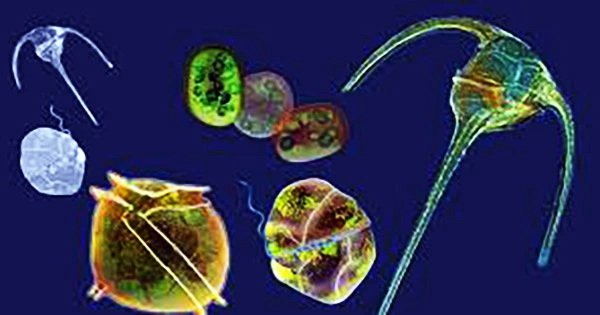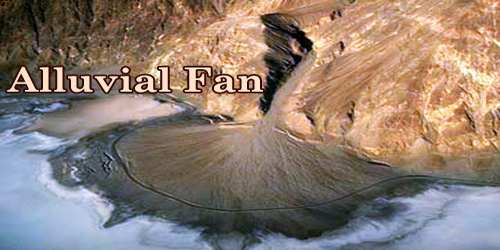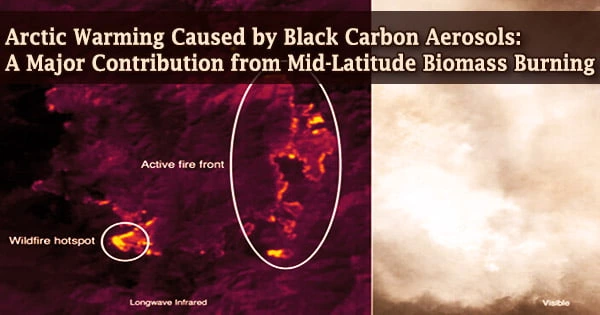Phytoplankton, a type of tiny marine plant, forms the foundation of most ocean food webs, and their production fuels commercial fishing, carbon sequestration, and healthy marine ecosystems.
However, nothing is known about how they will react to rising water temperatures as a result of climate change. The majority of climate models presume that they will all react in the same way.
However, a team of researchers lead by former Ph.D. student Stephanie Anderson at the University of Rhode Island’s Graduate School of Oceanography has established that different varieties of phytoplankton will behave differently.
An analysis of how four major types of phytoplankton would behave to ocean temperatures expected between 2080 and 2100 reveals that their growth rates and distribution patterns will likely differ, with substantial consequences for the future makeup of marine communities around the world.
Any organism that lives in a big body of water but cannot swim against the stream is considered plankton. Many are minuscule, yet some, like as the deadly Portuguese Man o’ War jellyfish, can be seen with the naked eye.
“Phytoplankton are some of the most diverse organisms on Earth, and they fix roughly as much carbon as all the land plants in the world combined,” said Anderson, now a postdoctoral researcher at the Massachusetts Institute of Technology. “Every other breath you take is generated by phytoplankton. And which ones are present affects which fish can be supported in a given region.”
URI Oceanography Professor Anderson Professor Tatiana Rynearson and colleagues from MIT, Scripps Institute of Oceanography, and Old Dominion University published their findings in Nature Communications on 5th November.
“This study represents a key contribution to the understanding of how phytoplankton responds to ocean warming,” said Rynearson. “All climate change forecasts of marine ecosystems include a term that reflects how we think phytoplankton growth responds to temperature. In this study, we’ve generated new, more accurate values for the temperature-growth response that better reflect the diversity of phytoplankton in the ocean. These new values can be used in future climate change forecasts, helping them to become more accurate.”
More than 45 percent of Earth’s photosynthetic net primary output is produced by marine phytoplankton species. They include prokaryotes and eukaryotes that acquired photosynthesis through endosymbiosis and are found in many of the major clades of the tree of life.

The researchers compiled temperature-related growth measurements from more than 80 existing research studies on four types of phytoplankton diatoms, which thrive in high-nutrient regions; cyanobacteria, which dominate in the open ocean where nutrients are scarce; coccolithophores, which play a key role in carbon uptake; and dinoflagellates, which migrate vertically in the water column.
They also looked at each group’s heat tolerance and ran a simulation of anticipated temperatures to see how phytoplankton distribution and growth rates might alter in various places of the world. They discovered that each group has a distinct level of tolerance for heat.
“The coccolithophores will probably face the greatest proportional growth decreases near the equator, which could potentially alter community composition there,” Anderson said. “The cyanobacteria, on the other hand, are expected to face the greatest proportional growth increases at mid-latitudes, and they might expand their range poleward.”
All climate change forecasts of marine ecosystems include a term that reflects how we think phytoplankton growth responds to temperature. In this study, we’ve generated new, more accurate values for the temperature-growth response that better reflect the diversity of phytoplankton in the ocean. These new values can be used in future climate change forecasts, helping them to become more accurate.
Tatiana Rynearson
“We were surprised that our simulations predicted the greatest range shift for the cyanobacteria in the Gulf of Alaska and the northeast Pacific Ocean, regions that support rich and abundant fisheries,” Rynearson added. “Importantly, cyanobacteria are not known to be very good fish food.”
In many types of water bodies, especially in the oceans, phytoplankton is the principal producer near the bottom. They grow by absorbing nutrients from the water and serving as food for zooplankton, or primary consumers. Fishes and whales, known as secondary consumers or top consumers, will consume the zooplankton.
In cooler places, all four phytoplankton groups are projected to boost their growth rates, although the degree of increase differs for each group, according to the study.
“With all the groups, we expect their growth rates to decrease closer to the equator,” Anderson said. “The equator is already the warmest region, so increasing temperatures there might push them to their limits. The temperatures there will exceed the levels they’re comfortable at, which will hinder their growth.”
According to the researchers, most species can handle temperatures higher than those they are used to, but the difference between what they are used to and the temperature at which they cannot survive narrows as they come closer to the equator.
“There’s a lot of capacity to handle warming towards the poles, but that capacity drops at the equator,” Anderson said.
Dinoflagellates showed the smallest change in growth rate in response to the increased temperature of all the groups studied, and they survived the largest range of temperatures, according to the researchers.
“Their metabolic rates are not as likely to be affected by temperature changes as the other groups,” said Anderson. “We hypothesize that it could be due to the fact that they are vertical migrants. Their ability to swim up and down exposes them to more temperatures, potentially enabling them to handle more temperature change.”
These findings have far-reaching ramifications. The decreasing biomass of phytoplankton at the equator, where phytoplankton growth rates are expected to slow as temperatures rise, may support fewer fish and other marine species.
“If you’re a fish and you’re dependent on one type of food and that’s no longer present, you might have to move with your prey to survive,” Anderson said. “This could lead to shifts in food webs regionally.”
The higher biomass of phytoplankton at higher latitudes, where growth rates are expected to improve, may be able to support a bigger number of fish, boosting commercial fisheries.
Because the study did not take into account other factors that could influence phytoplankton growth rates, such as nutrition or light availability, Anderson believes the study’s implications are speculative. She’s now putting those new variables into a new model to explore how the outcomes might alter.
Phytoplankton plays a crucial function in the aquatic food web in addition to helping to power life on Earth. They provide food for a wide range of marine species, from minute zooplankton to massive predators such as whales.
Underwater animals would confront a severe food scarcity if phytoplankton levels fell. Phytoplankton helps to power all forms of life on Earth in this way.
















